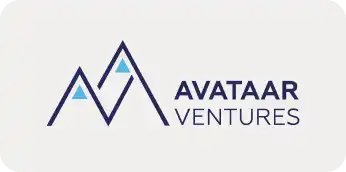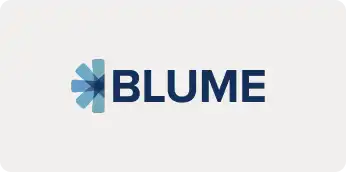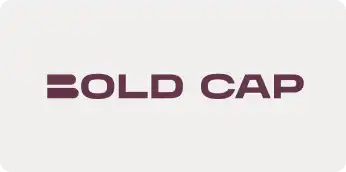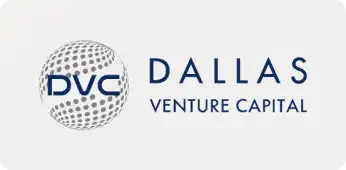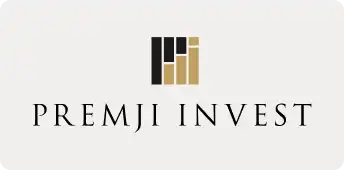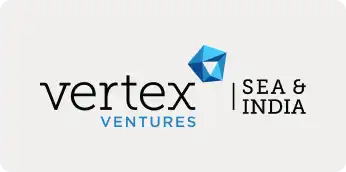“We cannot build our own future without helping others to build theirs.” — Bill Clinton
Once maybe in a lifetime comes across a company that has build something that impacts mostly everyone in their industry. Think of say Office365, StackOverflow, Gmail, DropBox which becomes a verb due to its sheer relevance & meaning in our lives.
Postman is a verb today. Period. Anyone today building, publishing & sharing API’s (Application Programming Interface ) are doing this on Postman. If not, they are doing it wrong. What Ankit, Abhinav & Abhijeet have build today is being used by millions of developers everyday across the globe. As if, it always existed in the first place. I being a programmer myself always have a Postman collection always open on my desktop. Bill Clinton will certainly be proud as Postman is building in real sense the future interface & plumbing of software systems.
0/11 — Setting the Context of the session
So, SaaSBoomi Build definitely ended with a bang. It was the last session kicked off by Founder & CTO of Postman — Ankit Sobti. Looking at his LinkedIn profile he had stints at Yahoo!, Adobe, Media.net in various engineering & product roles. The session titled “Designing your Organization for 10x Impact” was focused on two rules :
- Rule #1: Build a proprietary technology that is 10x better. (we all know this)
- Rule #0: Design an organisation that can build 10x better technology.
Here are my list of the top 11 key takeaways from the Ankit’s session titled
1/11 — Postman — The billion dollar unicorn story from India
Ankit started by sharing in a nutshell the story of Postman. The early days from founders building something they wanted to raising money, growing their team & expanding at a blitzkrieg speed. Today Postman stands with 10M+ loyal users, has been adopted by 500K+ organisations & with a jaw dropping 2.5M+ Monthly Active Users ( MAUs).
They have broken all the myths & playbooks and rewritten many rules for the next generation product companies that are getting build today.
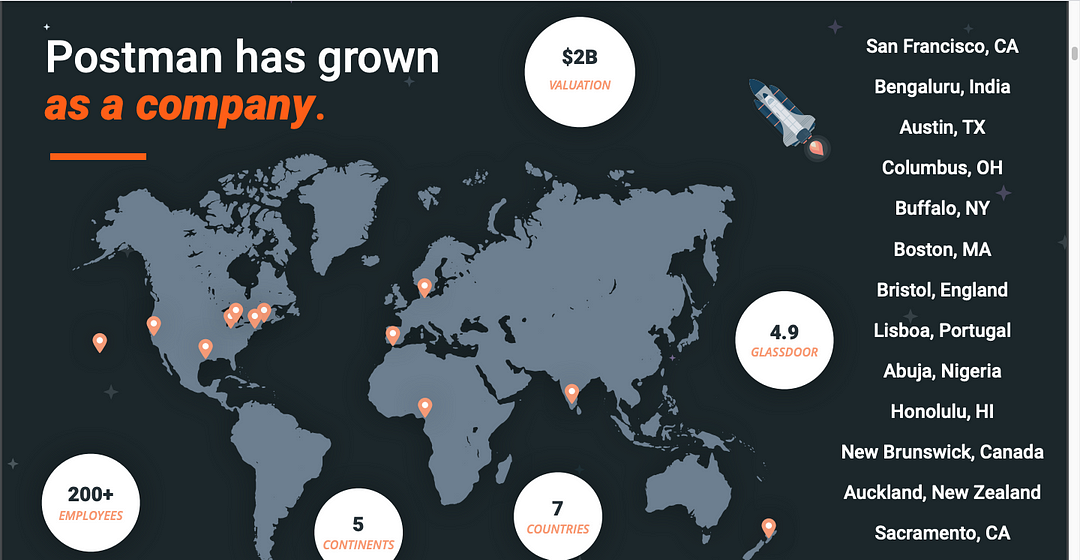
Moreover, to the founders present in the session Postman gave us the courage to dream big.
2/11 — Thinking organisation as a product : 0–1, 1–10, 10–100 & Beyond
Ankit started by giving us a mental model to think about building our organisation for 10x impact. His analogy was simple & elegant — think about your organisation as a living product. Every phase of your company needs to be designed by choice & not left to chance. As in writing code — you choose between an elegant design & bad design. There’s no middle ground, its a binary choice to orchester your organisation for tremendous impact.
The legendary & late Clayton Christensen — Jobs to be Done frameworks was mentioned by Ankit while thinking about building teams, products & orgs. Your Customer Needs a Nail in the Wall, Not a Hammer.
Key takeaways emerged for Product, People & Organisations :
- Products : Designed to make better users, not better products
- People : Designed to put the right people in the right place, with the problem statements that are challenge at the right level
- Organisation : Designed to make Employees more effective at their Job
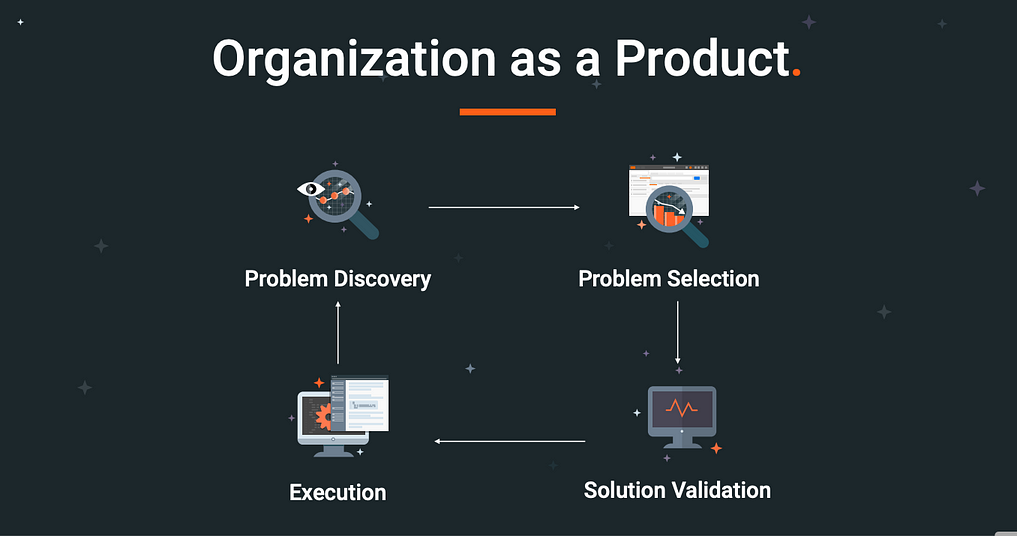
3/11 — Designing your Organisation for success is an Art
Ankit moved on to the building blocks of designing the organisation for impact. He mentioned that there are 2 key considerations :
- Strategic Design Elements
- Tactical Design Elements
What followed next 30 mins blew most of us apart. It was practicality weaved with philosophy. Building from first principles at its best.
4/11 — Strategic Design : Values & Communication as a force multiplier
Ankit started talking about the importance of Core Values. He mentioned the values are a reflection of the founding team’s mindset & beliefs. This seeps in across teams top-down & binds the organisation as a glue through good, bad & tough times.
He mentioned about a sync between values, communication structures & therefore the intended design of your organisation.
The legendary Mythical Man Month’s — Inverse Conway Maneuver was mentioned making the tech geeks like us present proud & smiling. What he said & recommended that every founder should make a conscious effort to evolve their team(s) and organizational structure to promote their desired architecture. Ideally any technology architecture will display isomorphism with their business architecture.
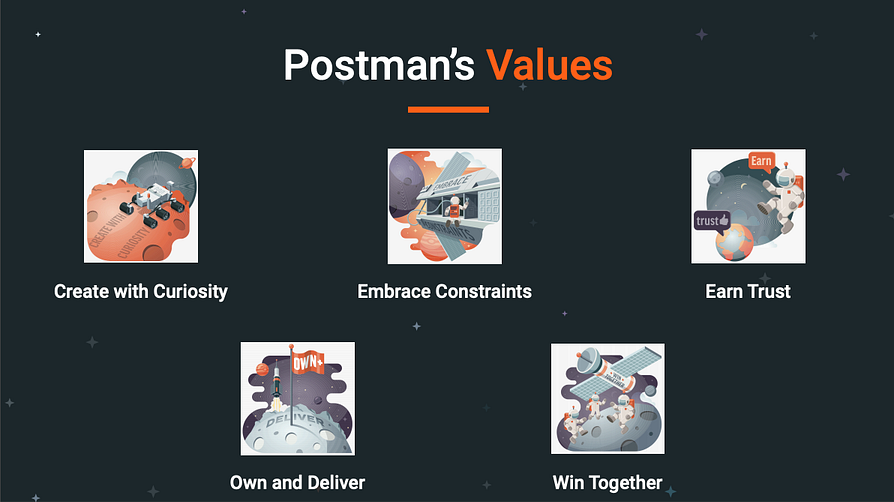
5/11 — Strategic Design : Domain Driven Design as a philosophy to build
This was a sweet dance of software design methodologies being applied beautifully to designing winning organisations.
What Ankit mentioned was bringing the 3 forces together :
- Bounded Context : Teams understand their roles but are bounded to each other complimenting & feeding off each other’s success.
- Ubiquitous Language : A language blended in the culture & values. Clear, consistent & ubiquitous.
- Context Mapping : The glue allowing the teams to integrate, align & define their inter relationships with precision.
I for one felt that Ankit was giving the 3 Tier Architecture for building teams at scale. He mentioned some guiding behaviours here :
- Boundaries created based on “business”, not technical concerns
- Aligned around generating value to the consumer
- Who is facing this set of problems? Why?
- How do they currently solve these problems?
- You as a company intend to solve these problems
- How do you go about doing that?
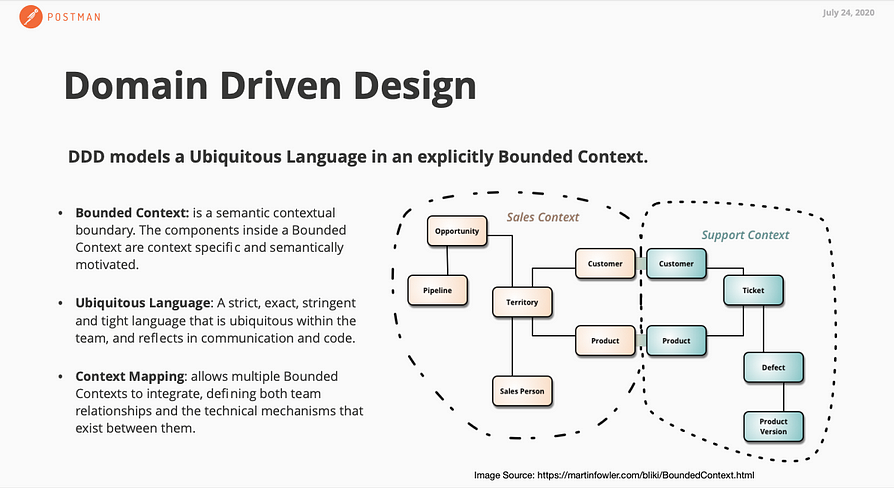
6/11 — Strategic Design : Squads build to execute like soldiers
Ankit mentioned about the psyche of cross-functional teams. The perfect analogy was of a soldier in a regiment with aligned goals, common codified values, accountable for end objective & always in auto-pilot.
He mentioned that these Squads are an outcome of a well-designed organisation. Stating these 9 core characteristics of a well build Squad.
1. Cross-Functional Mission Driven Teams
2. Squads are required to Own and Deliver
3. Squads are isomorphic with the Business Domain
4. Squads communicate using the same Ubiquitous Language
5. Squads are autonomous
6. Reduce cross team collaboration
7. Responsible for End user experience
8. Squads Win Together
9. Wouldn’t work without our Values.
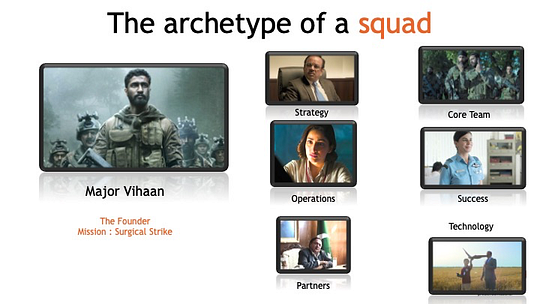
7/11 — Tactical Design : OKRs, Strategy & Visions as an alignment tool
Ankit moved promptly to the tactical aspects of designing the organisation for 10x impact. He spoke passionately about the importance of alignment of teams with the over arching goals of the organisation.
3 key themes & toolkits emerged here :
OKR as a tooklit for alignment : A Tool to create alignment and engagement around measurable and ambitious goals. They are frequently set, tracked and re-evaluated — usually quarterly. OKRs are bidirectional — allow for top-down strategic goals to align with bottom-up tactical objectives
Championed by legendary John Doerr and build on top of Andy Grove’s bible on management. ( Read High Output Management ) it gives fast moving organisation alignment to the goals at hand.
Strategy Document as an approach to organisational problem solving : A theory describing the nature of the challenge & then identify policies that’ll be applied to address the challenge. Any strategy must be accompanied a set of specific actions directed by guiding policy to address challenges. A strategy is only meaningful if it leads to aligned action
Vision Document as the BHAG ( big hairy audacious goal ) : 1–2 sentence aspirational and inspirational statement. How will you be valuable to your users and your company? How will you make them better at their Job? What constraints are you limited by today? & the Future: what do you expect to be constrained by in the future?

He finally emphasized the founders present to deeply introspect on these 3 themes & toolkits to seek true alignment & lead teams towards consistent wins.
8/11 — Tactical Design : The Hiring Conundrum
This was one of the most awaited of the parts of the talk which baffles every founder night & day. How do we find the right fit. He again in a true software methodology parlance gave the 4 stages of the teams. It was like Crossing the Chasm but meant for building teams. Geoff Moore would have been proud.

As teams move from falling behind to finally innovating. He reminded us that maybe each team may go through this chasm but founders need to super cognisant that their design impact should make sure this transition happens with time. Leading indicators need to be carefully monitored for long term success.
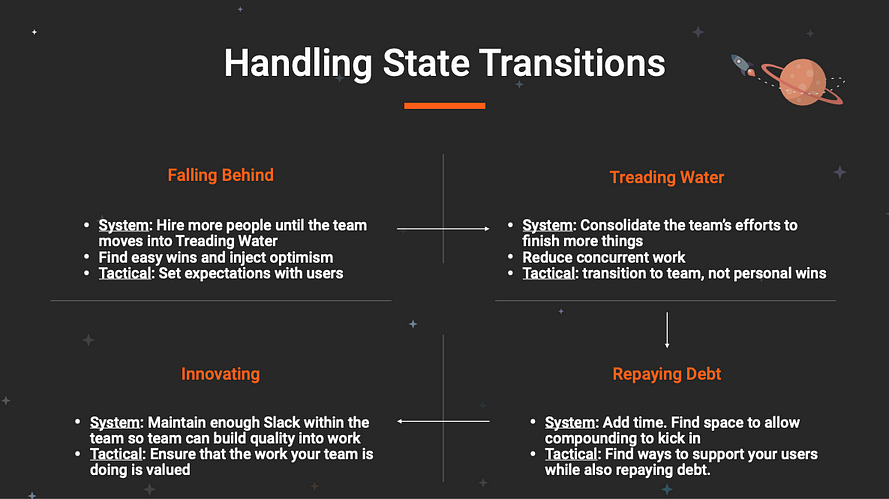
9/11 — Tactical Design : How does a winning team looks like
Ankit spoke about the “Scope of Influence” as in how career progression of teams should automatically mimic these 3 characteristics :
As folks advance in their careers, their duties should encompass:
- Complexity: a higher degree of complexity
- Influence: the scope of their influence should expand
- Impact: the contributions should become more impactful
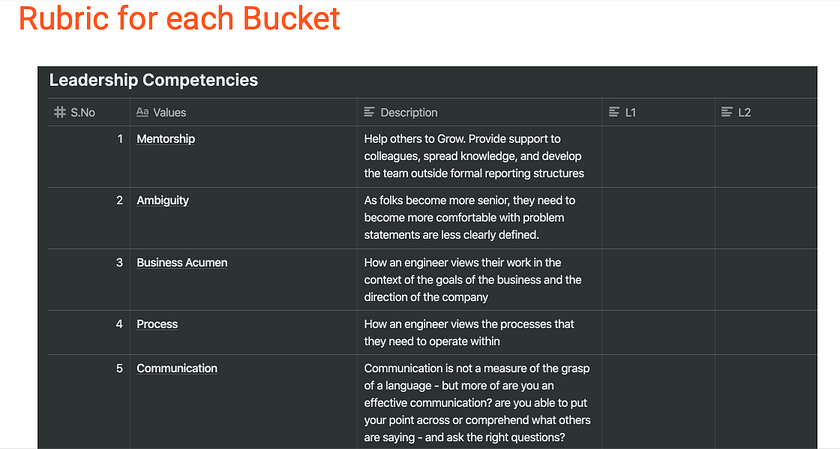
He mentioned that it is important and a leaders’s job to define and make explicit the expected behaviors within the scope of influence for any given level
10/11 — Tactical Design : A culture of learning & experimentation
Finally, Ankit touched upon that self-motivated winning team constantly keep learning, run experiments & measure it dispassionately.
At Postman he reflected 4 core skills takes precedence :
- Product Thinking
- Analytical Thinking
- Systems Thinking
- Cognitive Psychology
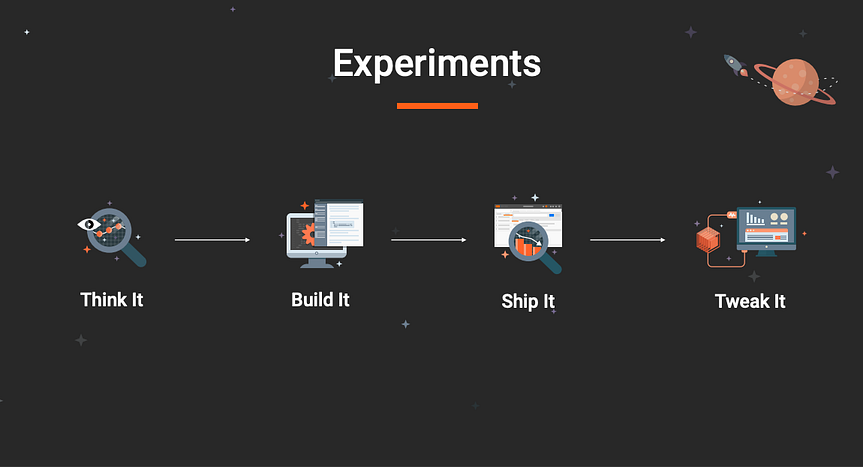
A culture that celebrates failure, solving the problem from the first principles, building continuous feedback loops of improvement & constantly shipping
11/11 — Closing Thoughts : Embrace Constraints everyday
I am just going to verbatim state what Ankit says rather than interpreting it. That will be the perfect justice to his inspiring talk
- Don’t replicate the what and how, without understanding the why
- Embrace Constraints. Problem + Constraints → Solution
- Experiment, measure, iterate.
- Identify your unique context and your unique solution
- Do not assume that you will get the same results with your different cultural foundation.
- Systems survive one to two orders’ magnitude of growth. Identify the inflection points and be willing & ready to evolve.
- Create with Curiosity and reward diversity and innovation.
- Love the problem, not the solution.
Final Thoughts — Take a bow Postman!
The legendary Paul Graham in his seminal essay “How to Get Startup Ideas” which has now become a folklore legend for entrepreneurs across the world says that.
“The way to get startup ideas is not to try to think of startup ideas. It’s to look for problems, preferably problems you have yourself…”
Ankit & the team at Postman starting solving a problem they had. Sharing & Building API’s was super hard. They just fixed it & Postman built an enterprise API platform leading to June’20 when they entered the pantheon of Unicorn club — all during a pandemic.
Postman — you will be celebrated, studied & quoted. In the words of J.R.R. Tokien you folks have opened a secret gate which many more will take the courage to open & walk.
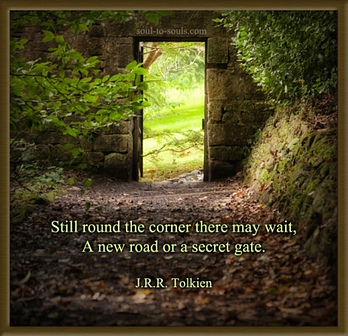
That’s in a nutshell is the essence of designing your organisations for 10x impact !
All great books mentioned during the talk a consolidated list :
- Start with Why — Simon Sinek
- Building Microservices — Sam Newman
- The Mythical Man Month — Brooks Jr.
- Domain Driven Design — Eric Evans
- High Output Management — Andy Grove
- Measure what matters — John Doerr
- Good Strategy Bad Strategy — Richard Rumelt
- Inspired — Marty Cagan
- Web Analytics 2.0 — Avinash Kaushik
- Thinking in Systems — Donella Meadows
- Thinking Fast Thinking Slow — Daniel Kahneman
















